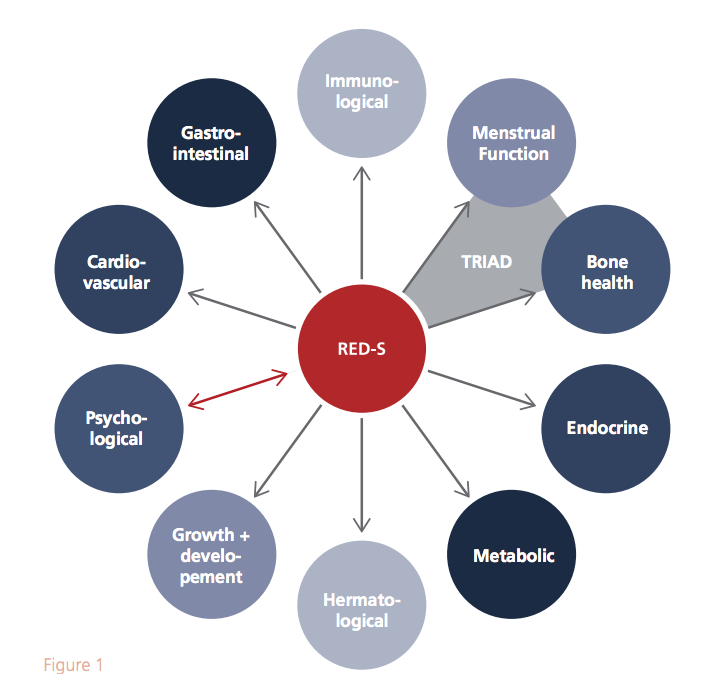Relative Energy Deficiency in Sport (RED-S)
Relative Energy Deficiency in Sport (RED-S)

Our bodies are engines.
Like any engine, the fuel we put in has a direct impact on performance and overall function.
Problems arise when we don’t put enough fuel in. This can have a significant impact on our performance and ultimately, our health.
How your nutrition can affect your health
RED-S is a syndrome that can affect athletes of all ages, genders, and sports disciplines, including endurance sports. It occurs when an athlete's energy intake (calories consumed) is insufficient to cover both their training demands and the energy required for normal physiological processes (think normal day to day functioning).
The effects of RED-S are far-reaching and have various consequences. Athletes with RED-S may experience impaired recovery, increased risk of injury, reduced immune function, hormonal imbalances, and even negative effects on bone health.
RED-S can lead to hormonal disruptions that can result in amenorrhea (absence of menstruation) in women and low testosterone levels in men. It can also increase the risk of osteoporosis through decreased bone mineral density; the end result being an increased risk of fractures.
Signs and symptoms of RED-S vary but can include chronic fatigue, frequent illnesses or injuries, mood changes, impaired performance, and disruptions in menstrual cycles in women. If you're experiencing these symptoms, it's crucial to seek advice.
Whilst it could be due to an energy imbalance, RED-S is a diagnosis of exclusion - that is, first you have to exclude other causes for those symptoms. However, nutrition plays a key role in addressing RED-S.
How can you fix it?
The primary treatment is increasing energy intake whilst safely managing training load. This might require working with a sports dietitian or suitably qualified nutrition professional to develop a personalised plan.
It’s worth highlighting that RED-S can take some time to recover from. If you truly have health issues secondary to RED-S, the likely recovery time is months. Think of it like any other significant illness or injury - it’s not an overnight fix.
Although it might sometimes seem a little tedious, this is one of the reasons I’m so keen to talk about energy balance and ensuring athletes eat enough calories. Fuel your training properly and give your body the fuel it deserves.
It can be a really tough mindset shift, but I always encourage any athlete I work with to think of their health first and their performance second. Everything flows from your health - your performance won’t improve with it, or at least not for long.
Think of your calories and performance like a loan.. If you aren’t paying enough back with interest, things can get really ugly and the consequences are significant.

